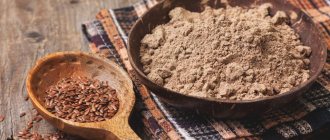Features of breathing exercises for weight loss
Breathing is one of the most important functions of the body. Its purpose is to saturate the blood with oxygen and remove carbon dioxide. Breathing exercises involve performing a set of special exercises aimed at burning excess weight. The main role in this process is played by oxygen, which activates oxidative reactions in the body. As a result, fat burning occurs.
Operating principle
The basis of breathing practices is the mechanism of creating a lack of oxygen in the body while simultaneously increasing the load on the muscles.
At this time, the intensity of oxidation processes increases, since during inhalation the concentration of oxygen molecules in the blood increases. When you hold your breath for a short time, the body's energy consumption increases, and fat cells begin to break down in order to obtain additional energy.
A special inhalation-exhalation pattern promotes the supply of more oxygen and the activation of fat-burning processes in the body.
Main advantages
The main advantages of breathing exercises are health improvement, normalization of the functioning of internal organs is observed.
Exercise helps:
- increasing the rate of nutrient intake;
- removal of waste and toxins;
- breakdown of fatty layers;
- eliminating the consequences of colds and lung diseases;
- reducing the level of cortisol (stress hormone).
The technique is suitable for patients of any age.
To achieve a positive effect, you can exercise for 15-30 minutes a day.
Basic principles of diet therapy for diseases of the lower respiratory tract
Diet therapy for patients with diseases of the lower respiratory tract and lung tissue is aimed at increasing the immunological reactivity of the body, rapid resolution of the inflammatory process, reducing intoxication, improving the course of oxidative processes, sparing the cardiovascular and digestive systems, kidney function, preventing side effects of antibacterial, anti-inflammatory and other drugs drugs.
Increasing the immunological reactivity of the body is achieved by providing a complete and varied diet with the introduction of a sufficient amount of proteins, fats, carbohydrates, vitamins (vitamins A, C, group B, β-carotene), minerals (calcium, magnesium, phosphorus, etc.), microelements (zinc, selenium, etc.).
The anti-inflammatory effect is ensured by limiting easily digestible carbohydrates, table salt to 4–6 g and increasing foods rich in calcium salts.
To reduce intoxication, a sufficient amount of vitamins (vitamins C, PP) and liquid (1500–1700 ml) are introduced into the diet.
The diet is enriched with vitamin A and β-carotene, which promote the regeneration of the respiratory tract.
The diet includes foods rich in B vitamins (meat, fish, wheat decoction, etc.), which prevents the suppression of intestinal microflora as a result of the use of antibiotics and sulfa drugs, and also foods rich in nicotinic acid, which have a vasodilating effect on the pulmonary vessels. and reducing bronchospasm.
A split diet is recommended, including 4–6 meals a day. Last meal no later than 2-3 hours before bedtime.
Benefits for the body
When performing breathing exercises, the gastrointestinal tract and cardiovascular system are activated, the muscles of the body are strengthened, the internal muscles of the respiratory organs are trained, and the condition of the skin improves.
Oxidation of fat deposits
This is a complex biochemical and physiological process in the cells of the body. It occurs with the participation of oxygen, which is an oxidizing agent for various substances.
Breakdown of fat cells
The breakdown of fat cells occurs as the body's need for energy increases.
The process is accompanied by weight loss and an increase in muscle mass. The rate of fat breakdown is affected by the oxygen content in the blood, hormone levels, and temperature.
During physical activity accompanied by special breathing techniques, an accelerated reduction of adipose tissue occurs.
Speeding up the digestion process
With light, shallow breathing, the rate of absorption of nutrients decreases, metabolism slows down by 25-30%.
Special breathing techniques can speed up the functioning of the gastrointestinal tract and increase the rate of absorption of nutrients from food.
The beneficial effect of breathing exercises on the digestive system allows you to quickly say goodbye to excess weight.
Removal of harmful substances
Some harmful substances accumulate along with fat deposits. Gymnastics for the respiratory system, which enhances oxidative processes, allows you to release toxic components from cells. They are subsequently eliminated from the body through the excretory system.
Stabilization of the nervous system
Deep breathing helps you concentrate on doing the exercises and distracts you from unpleasant thoughts. During exercise, the level of stress hormone decreases. After the session, the nervous system relaxes and an improvement in well-being is observed.
Fighting overeating
Excess calories enter the body when eating foods containing simple carbohydrates (sugar, sweets, cakes).
Many people “eat” stressful conditions in an attempt to calm down. Breathing exercises help relieve nervous tension, as well as dull the feeling of hunger due to more complete absorption of food.
Physical education for weight loss with a trainer - 90 minutes
The problem of excess weight is very acute in the modern world, because... Most people lead a sedentary lifestyle, abuse fast food, alcohol, and sweets. Meanwhile, obesity not only looks unsightly from an aesthetic point of view, but also causes a significant blow to health in general. According to the World Health Organization, overweight people have a several-fold increased risk of heart attacks and strokes; they are more likely to suffer from hypertension and coronary heart disease. Excess weight puts stress on bones, joints, and spine; obese people are more likely to develop hypothyroidism, diabetes, kidney and liver failure, and pancreatitis. The presence of 10 kg of excess weight can already limit a person’s activity and endurance to stress, what can we say about those whose weight exceeds the norm by 30-70 kg.
Often people, having decided to lose weight, want to achieve maximum results quickly and effortlessly. However, fasting, using “miracle” drugs and grueling cardio workouts either have no effect or only make the situation worse. The body experiences severe stress and begins to accumulate fat “in reserve,” which leads to weight gain. In addition, poor nutrition, excessive exercise and side effects of pills can worsen existing diseases and acquire new ones.
The only reliable and safe way to lose weight is to change your lifestyle, switch to proper nutrition, combined with proper, constant physical activity. Specialists – a nutritionist and a physical therapy trainer – can help with this.
Why is it necessary to choose therapeutic physical culture among all types of physical activity? The fact is that the body of an overweight person is weakened and is not ready for heavy loads. A professional exercise therapy trainer understands this and selects a set of exercises that helps to increase the load gradually, as comfortably and gently as possible so that the person does not experience stress and physical exhaustion. In addition, obesity is often accompanied by chronic diseases, the presence of which must also be taken into account.
Rules of physical education for weight loss
- You need to exercise regularly
- It is necessary to alternate between workload and rest, to maintain a sleep, rest and work schedule.
- The duration of the lesson is determined individually by the instructor
- The load level should increase gradually
- It is important not only to do exercises, but also to breathe correctly
- It is necessary to follow the instructions of the doctor and instructor
- Proper nutrition, following the diet rules prepared by a nutritionist
Exercise goals for weight loss
- Normalization of metabolic processes
- Toning the muscular system
- Weight reduction to normal values
- Maintaining and restoring the normal functioning of the heart, blood vessels, gastrointestinal tract and respiratory organs
- Increased stamina
- Strengthening the immune system
- Finding a balance between consumed and expended energy.
Exercise therapy and proper nutrition
Exercise therapy classes must be combined with proper nutrition and adequate drinking regimen.
Nutrition should not turn into a diet, because this will only lead to breakdowns. You need to eat little by little, but often, 5-6 times a day. Preference should be given to foods high in protein, fiber, and vitamins. It is not recommended to eat less than an hour and a half before training, but after training you need to have a snack within half an hour in order to close the so-called “carbohydrate window”. What and in what quantity can be eaten should be determined by the doctor and trainer based on the client’s preferences, size, intensity of exercise, etc. It is also necessary to drink about 2 liters of clean water per day, of which 300-500 ml during training.
Recommendations for training for weight loss
Exercise therapy classes should be attended every day or every other day.
You can start with short twenty-minute workouts, gradually moving to a duration of 40-60 minutes. The trainer can create a personal training schedule for each patient, as well as develop a set of exercises that can be performed at home. During training, it is necessary to monitor the pulse; if it reaches prohibitive values, you need to rest or end the training. The maximum permissible heart rate can be calculated using the formula: 220-age in years. Any exercise therapy session begins with a warm-up, which is necessary to warm up the muscles and reduce the likelihood of injury. Warm-up should last at least 10-15 minutes and include exercises for all muscle groups. The main training consists of breathing exercises, static and dynamic exercises and cardio exercises. For people with extremely high body weight or poor physical fitness, only static and breathing exercises are used, which are gradually joined by others.
For girls, aerobic exercises are especially effective, which allow you to burn fat cells; for men, anaerobic exercises are especially effective, helping to develop muscles and build muscle mass. Aerobic exercise allows the body to intensively burn calories, especially those that come from carbohydrates. If the workout lasts at least 50 minutes, then a long process of energy burning begins in the body. Anaerobic exercises, on the contrary, are characterized by speed of execution with maximum tension of all muscles. If necessary, you can include exercises on simulators in your training.
Many people who are losing weight ignore breathing exercises, stretching exercises and exercise with light weights, believing that only cardio training is effective for losing weight. This is fundamentally wrong, because... Too long and intense stress on the heart and blood vessels can cause exacerbation of diseases and deterioration of well-being. The duration of cardio training should not exceed 20 minutes. The training program should include exercises that involve all muscle groups, then fat deposits will burn faster.
A physical therapy session always ends with a cool-down, i.e. The final set of exercises that allow you to relax will restore your pulse and breathing. A good end to your workout will be a contrast shower, a visit to the sauna and a sports massage to reduce muscle pain and improve skin tone. If during training a person begins to feel dizziness, nausea, or pain, then stop the training and reduce the load.
Train on your own, change the set of exercises, number of approaches, weight of equipment, etc. without the knowledge of the coach is strictly prohibited, because this can lead to injuries and exacerbation of diseases. A specialist should also monitor the correct execution of movements, because incorrect execution will not bring any benefit at best, and will cause harm at worst. In addition, muscle pain after training should also not be unbearable and last more than 2 days.
With excessive loads, the muscles do not have time to recover, the level of lactic acid in them constantly increases, and this is fraught with injuries and sprains. Gymnastics should always bring joy, because... a person who exercises “through force” will quickly lose interest in training. In order for exercise to be enjoyable, it is necessary to simulate situations of success, i.e. Most exercises should be successful and not lead to extreme exhaustion.
A professional trainer always tries to maintain a pleasant atmosphere, as well as diversify the training with sports games and dance minutes. Exercise therapy should be combined with walks, swimming, yoga, Pilates, cycling, hiking, and massage. The frequency and intensity of exercise outside the gym should also be discussed with your coach.
Exercise therapy in combination with lifestyle changes will bear the first fruits within a month. After 3-6 months, the results will be significant, but this does not mean that you need to quit classes. Daily training should become a tradition, only then the weight can be maintained for a long time. In addition, the intensity of training should gradually increase, because... the body gets used to a certain type of activity and stops responding to it.
The subscription will allow you to save up to 20% of the cost of services ordered separately.
Contraindications for exercise therapy:
- Exacerbation of chronic diseases
- Increased body temperature
- Threat of miscarriage during pregnancy
- Recent surgery
- Bleeding and tendencies to it
- Severe pathologies of the heart and blood vessels
- Oncological diseases
- Serious mental illness
- Acute inflammatory processes
- Acute infectious diseases
Rules for conducting classes
To increase the effectiveness of your classes, you should follow several rules:
- Training should be done regularly.
- You cannot limit yourself in food; nutrition must be complete and balanced. The basis of the diet should be natural products. You should reduce your consumption of fats and sweets.
- Perform exercises on an empty stomach, otherwise digestive problems may occur.
- The room must be well ventilated to ensure sufficient oxygen supply to the lungs.











